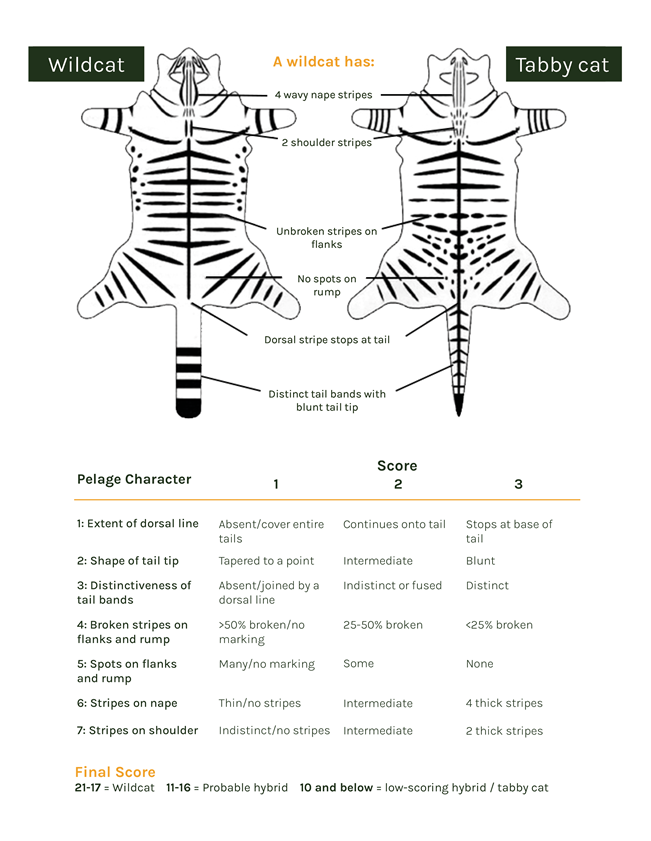Photograph: P. Ross
Have you seen a wildcat?
If you think that you have seen a potential wildcat or wildcat hybrid, follow our quick guide below to help save the Highland tiger.
-
Q. How do I identify a wildcat?
The easiest way to judge whether a cat has any wildcat heritage in the field is to visually assess its coat colour and markings (the pelage). For example, typical features of a wildcat include a blunt bushy tail with a black tip, distinct black rings on the tail which are not joined together, stripy grey and brown markings, and no white feet.
This official method used by scientists is known as pelage scoring. Seven features are scored out of three, which helps the identifier to tell the difference between a wildcat, a tabby domestic cat, and a hybrid of the two.
The pelage scoring methodology was developed by Dr Andrew Kitchener, after he analysed over 100 wildcat skins that are owned by National Museums Scotland. Pelage scoring is a useful tool for identifying cats in the field, or from photographs, particularly camera trap images.

-
Q. I think I have seen a wildcat. What should I do?
If you think you have spotted a wildcat or a hybrid based on the pelage scoring information above, please submit your sighting/image(s) to iRecord, a nationwide database that our field team have direct access to. Please include a detailed description of your sighting alongside any photos or video footage. All visual evidence is helpful as it allows our expert team to independently pelage score the cat.
Alternatively, you are welcome to email us at wildcats@rzss.org.uk and explain your sighting to us directly.
-
Q. The wildcat that I have seen is dead or has been involved in a road traffic accident. What should I do?
If this cat was found within the Badenoch and Strathspey area, please call us on (+44)7443 069595 or 01540 651994 as our project is focused in this area.
For all other incidents, please email us at wildcats@rzss.org.uk with a photo or footage of the sighting and any other information you may have. Please only take a photo if it is safe to do so.
If you come across an injured animal, call the Scottish SPCA animal helpline on 03000 999 999. -
Q. How will Saving Wildcats use the information obtained from sightings of potential wildcats?
Your sightings will help us map the distribution of both wildcats and wildcat hybrids throughout Scotland and may help us to assess additional potential release sites in the future.
-
Q. Will you conduct a genetic test on my cat or the cat I have sighted?
Genetic testing for wildcat DNA is a very expensive process, and it requires the collection of a blood, saliva or hair sample which should not be carried out unnecessarily.
In specific instances that align with our research, Saving Wildcats may offer to test suspected wildcats that could contribute directly towards wildcat conservation in Scotland.

